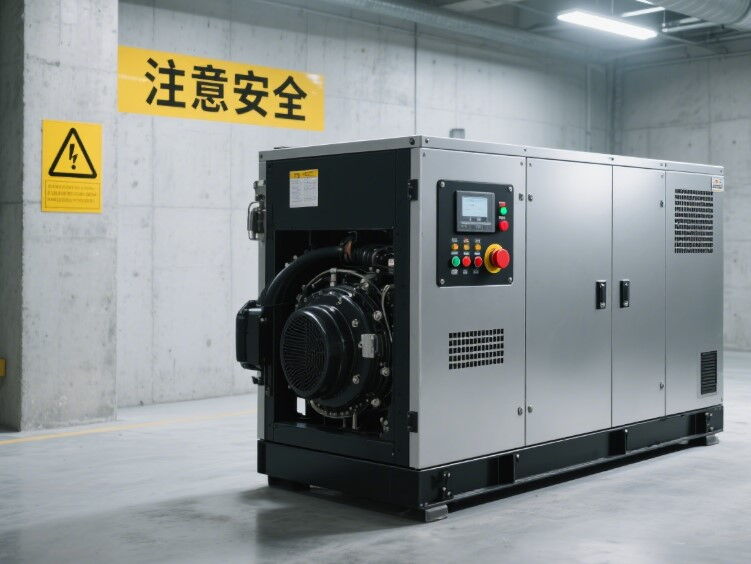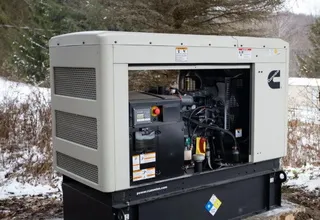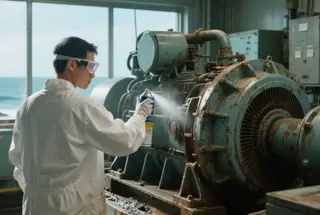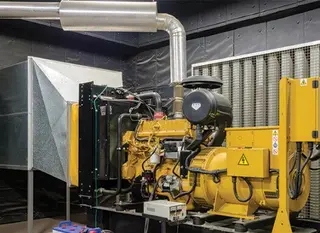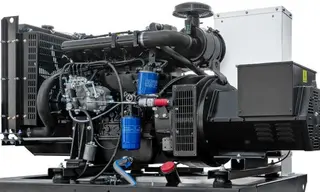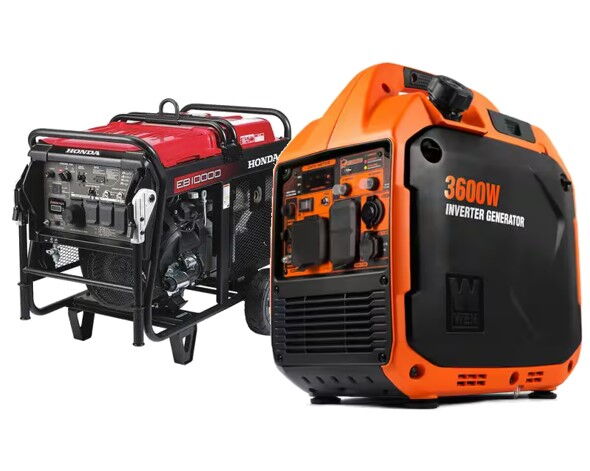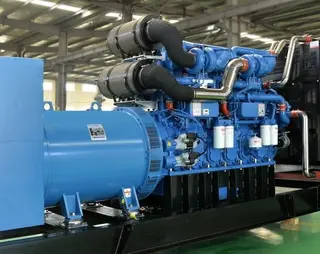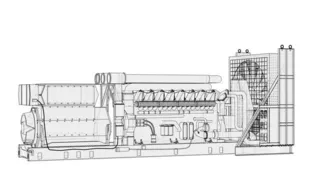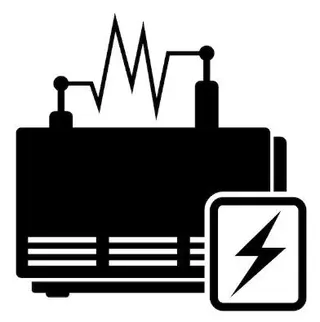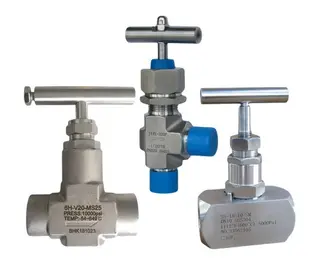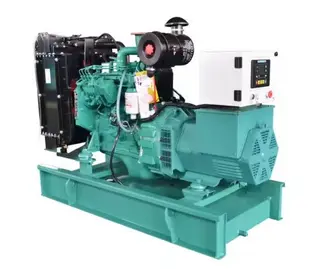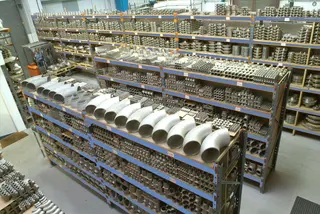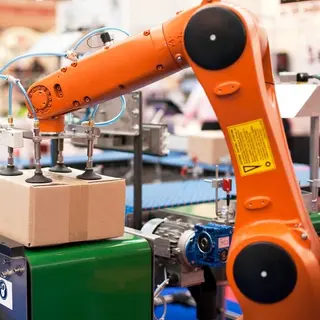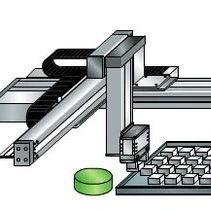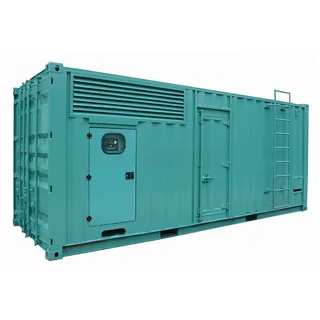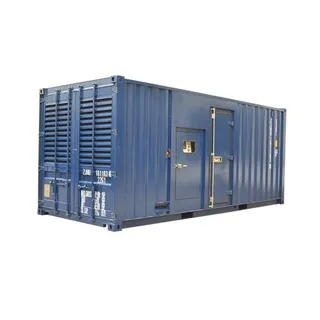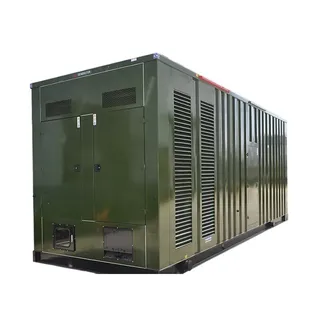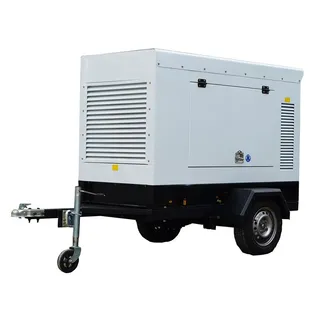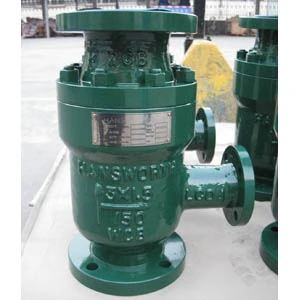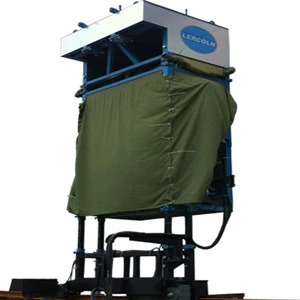Automatic Voltage Regulators in Diesel Generators
In modern society, the stability and reliability of power supply are crucial for various working scenarios and building facilities. Diesel generators, as an important backup power source, can provide continuous and stable power supply in emergencies or when the grid is unavailable. However, many people are unaware of the importance of a key component of diesel generators, the Automatic Voltage Regulator (AVR). This article will delve into the functions, significance, and various factors affecting voltage regulation in diesel generators, helping readers better understand this complex and vital device.
The Function of Automatic Voltage Regulators (AVR)
An Automatic Voltage Regulator (AVR) is a solid-state electronic device specifically designed for diesel generators. Its primary function is to automatically maintain the voltage at the generator's output terminals at a predetermined level. In actual operation, the voltage level of the generator may fluctuate due to various factors, such as changes in load and variations in operating temperature. As part of the excitation system of an alternator, the AVR can effectively neutralize these fluctuations and ensure the stability of the output voltage.
The stability provided by the AVR is crucial for handling inconsistent loads. In many cases, diesel generators need to power a variety of equipment or machines. Without an AVR, when more devices are connected to the generator, the voltage output would gradually decrease, causing the connected devices to not receive sufficient power. The AVR electronically senses the voltage at the generator terminals and compares it with the predetermined voltage level. It then sends an error signal to the exciter stator, adjusting the excitation current (by increasing or decreasing the current) to raise or lower the terminal voltage accordingly.
In short, the AVR acts like an intelligent "electricity butler," constantly monitoring and adjusting the generator's voltage to maintain it at a fixed level. This automatic regulation function not only improves the efficiency of the generator but also extends its lifespan. Moreover, it protects the connected devices from damage caused by voltage fluctuations.
The Importance of Automatic Voltage Regulators (AVR)
The Automatic Voltage Regulator (AVR) is essential for the stable operation of diesel generators. It not only ensures stable voltage output but also effectively protects connected devices from damage caused by voltage fluctuations.
1. Protecting Equipment and Enhancing Performance
Diesel generators without an AVR often struggle to meet the power requirements of connected devices. Many non-regulated generators cannot adjust their voltage output on their own, which can lead to unstable voltage, affecting the performance of the devices. For example, if the voltage output fluctuates or drops, the connected devices may not function properly due to insufficient voltage, and they may even get damaged.
By maintaining a stable voltage output, the AVR ensures that connected devices receive the power they need, thereby enhancing their performance and reliability. Additionally, the AVR can provide surge protection, preventing devices from being overloaded by excessive voltage. This not only damages the devices but can also cause electrical fires or electric shock accidents. The AVR can adjust the voltage level during overloads, preventing electrical short circuits and ensuring the safe operation of the devices.
2. Improving Generator Efficiency and Lifespan
Using an AVR can significantly improve the efficiency of the generator and extend its lifespan. The AVR specifically monitors the voltage output to ensure consistency, avoiding drastic voltage fluctuations that can damage the generator and connected devices. For example, a generator without an AVR may experience voltage drops or spikes when the load changes, which not only affects the performance of the devices but can also cause the generator to overheat and shorten its lifespan.
The AVR precisely controls the excitation current, optimizing the generator's operating conditions to maintain optimal performance under various load conditions. This optimization not only improves the efficiency of the generator but also reduces energy waste and lowers operating costs.
3. Enhancing Power Quality
AVRs are often combined with other power quality capabilities, such as surge suppression and prevention, short-circuit prevention, voltage balancing, line noise reduction, and harmonic filtering. These functions work together to ensure that the power quality of the generator's output meets high standards and satisfies the operating requirements of various devices.
For example, devices like frequency converters and UPS systems can generate harmonics, causing voltage waveform distortion. The AVR can detect these distortions and correct the voltage waveform by adjusting the excitation current, ensuring stable power quality. This capability is crucial for protecting sensitive equipment, such as computers and precision instruments, from the effects of voltage fluctuations and distortions.
What Affects Voltage Regulation in Diesel Generators?
The voltage regulation of diesel generators is influenced by a variety of factors involving mechanical, electrical, control systems, and external load aspects. Understanding these factors is essential for optimizing the generator's performance and ensuring voltage stability.
1. Mechanical Factors
The speed of the diesel engine is a key factor affecting the generator's frequency and voltage. If the speed fluctuates, for example, due to unstable fuel supply or governor failure, the voltage will fluctuate due to changes in frequency. Additionally, wear of belts or couplings can cause uneven power transmission, indirectly causing speed fluctuations and affecting voltage stability.
2. Electrical Factors
The speed at which the AVR adjusts the excitation current directly affects the voltage recovery time. If the AVR's adjustment speed is slow, the voltage may drop significantly when a sudden load is added, and the recovery time will be longer. Moreover, if the excitation power cannot meet the load requirements, such as when starting a large motor, the voltage may not be maintained at the predetermined level.
The magnetic field generated by the load current also affects the voltage. Inductive loads (such as motors and transformers) produce high inrush currents during startup, causing a voltage drop. During operation, the lagging power factor of inductive loads requires the AVR to compensate for reactive power. Conversely, capacitive loads (such as capacitor banks) can cause voltage to rise, requiring the AVR to make reverse adjustments.
3. Control System Factors
Improper settings of the AVR's PID parameters (such as excessive integral time) can lead to voltage overshoot or oscillation. Errors in the voltage detection circuit, such as drift of the voltage divider resistors, can mislead the AVR's regulation, causing unstable voltage.
4. External Load Factors
Different types of loads have varying effects on voltage regulation. Resistive loads (such as lighting) have a minimal impact on voltage regulation, while inductive and capacitive loads have a more significant effect. Sudden addition or removal of high-power loads (such as the start-up and shutdown of large equipment) can exceed the AVR's regulation capacity, causing instantaneous voltage dips or spikes.
Moreover, harmonics generated by devices like frequency converters and UPS systems can cause voltage waveform distortion and interfere with the AVR's detection accuracy. In high-altitude areas, the thin air reduces the combustion efficiency of diesel engines and weakens the generator's heat dissipation capability, which may require derating the generator. High temperatures increase the resistance of the excitation windings, reducing excitation efficiency; low temperatures can make diesel engine startup difficult and cause unstable speed.
5. Parallel Operation Factors
When multiple generators are operated in parallel, improper droop rate settings can lead to uneven load distribution and reduced voltage stability. Increased contact resistance in the AVR detection or excitation circuit can cause regulation failure. When a diesel generator is connected in parallel with the grid, voltage fluctuations in the grid can affect the generator's output voltage through the synchronization process.
Types of Automatic Voltage Regulators (AVR)
Although small in size, the Automatic Voltage Regulator (AVR) is powerful and composed of many precision components. Common types of AVR include contact voltage regulators, transistor regulators, and computer-controlled regulators. These components work together to make the AVR an essential configuration for generators.
1. Contact Voltage Regulators
The contact voltage regulator is the most traditional type of AVR. It controls the excitation current through mechanical contacts. This type of AVR has a simple structure and lower cost, but its regulation accuracy and response speed are relatively slower. It is suitable for applications where voltage regulation requirements are not high.
2. Transistor Regulators
The transistor regulator is an electronic AVR that uses transistors to control the excitation current. This type of AVR has higher regulation accuracy and faster response speed, making it better suited to handle load changes. Transistor regulators are suitable for applications requiring high-precision voltage regulation.
3. Computer-Controlled Regulators
The computer-controlled regulator is the most advanced type of AVR. It uses a microprocessor to control the excitation current. This type of AVR is highly intelligent and flexible, capable of real-time monitoring and adjustment of voltage output to ensure stability and consistency. Computer-controlled regulators are suitable for applications with extremely high voltage regulation requirements, such as data centers and medical equipment.
Conclusion
The Automatic Voltage Regulator (AVR) is an indispensable and vital component of diesel generators. By automatically regulating the generator's output voltage, it ensures voltage stability and consistency, protecting connected devices from damage caused by voltage fluctuations. The AVR not only improves the efficiency and lifespan of the generator but also enhances power quality, ensuring the normal operation of various devices.
Understanding the various factors that affect voltage regulation in diesel generators helps optimize the generator's performance and ensure voltage stability. Whether it is mechanical, electrical, control system, external load, or parallel operation factors, they all need to be considered in the design and operation process to fully leverage the role of the AVR.
In summary, although small in size, the Automatic Voltage Regulator (AVR) is powerful and serves as the guardian of diesel generators. It ensures the stable operation of generators under various complex conditions and provides reliable power supply for connected devices. When selecting and using diesel generators, it is essential to pay attention to the role of the AVR and ensure its proper operation to provide reliable power support for your work and life.
Send your message to this supplier
Related Articles from the Supplier
Automatic Voltage Regulators in Diesel Generators
- Aug 16, 2025
Complete Guide to Diesel Generator Sets Voltage
- Oct 27, 2025
Related Articles from China Manufacturers
Addressing Voltage Anomalies in Diesel Generators
- Oct 07, 2024
Application of Robots in Automatic Packaging
- Sep 29, 2022
Application of PLC in Automatic Manipulators
- Sep 27, 2022
Related Products Mentioned in the Article
- www.chinatopper.com
- Address: Xiamen
- Phone: 86-592-5819200
- Business Type: Trading, Industry & Trading, Manufacturer,
Supplier Website
Source: https://www.chinageneratorsets.com/news/automatic-voltage-regulators-in-diesel-generators.html

